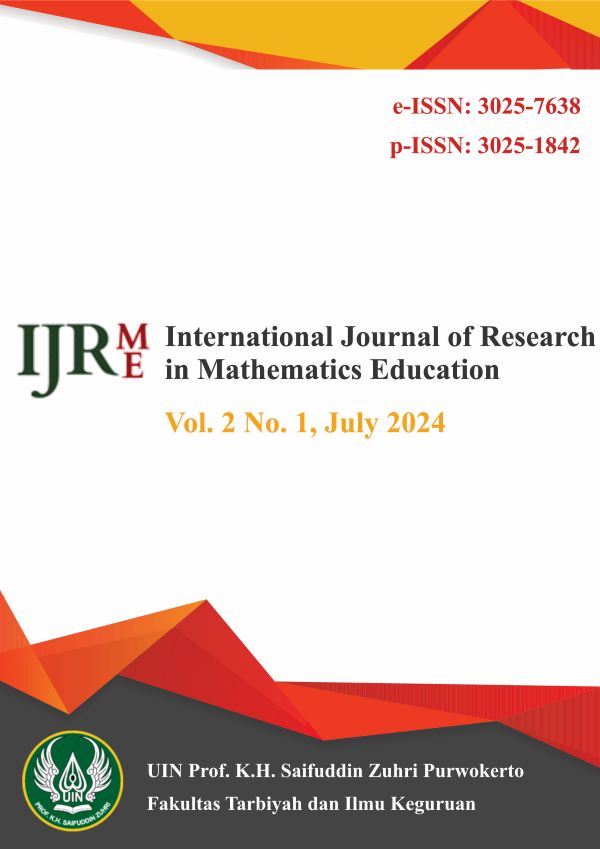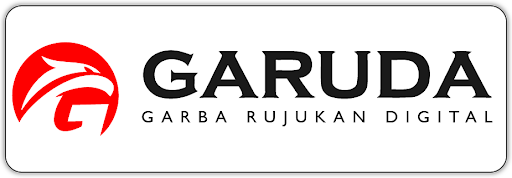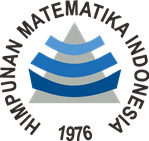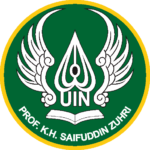Enhancing Students’ Independence of Learning: Problem-Based Learning Model Integrated with TaRL and CRT Strategies
DOI:
https://doi.org/10.24090/ijrme.v2i1.11283Keywords:
problem based learning, CRT, TaRL, Independence, MathematicsAbstract
The results of observations that have been made in class X E9 SMA Negeri 5 Purwokerto show that the problem that exists in Mathematics learning is the lack of student independence, many students do not carry out independent evaluations individually and according to their abilities. There are still students who lack awareness in preparing themselves before the learning process begins. This can be seen when the teacher starts learning activities, only a small number of students prepare themselves before the learning process begins. When students are given an assignment, they don't do it straight away but still depend on their friends, for example, if they are given practice questions, they still look at their friends' answers. Seeing this, learning is needed that actively involves students and can make students dare to try to use their own abilities in solving problems. Therefore, the author is interested in this research. Learning with the Problem Based Learning model accompanied by TaRL and CRT approaches in Probability material in class X E9 SMA Negeri 5 Purwokerto can increase the percentage of students' learning independence from cycle I to cycle III by 39.6%.References
Edizon, & Maharani Zan, A. (2023). Penerapan Model Discovery Learning Terintegrasi TaRL untuk Meningkatkan Motivasi dan Hasil Belajar Matematika Peserta Didik. Jurnal Pendidikan Tambusai, 7(2), 18939–18949.
F Assyifa, E., Pujiastuti, H., & S, C. A. H. F. (2020). Matematis Ditinjau Dari Kemandirian Belajar Siswa. Jurnal Inovasi Dan Riset Pendidikan Matematika, 1(4), 367–382.
Hasratuddin. (2014). Pembelajaran Matematika Sekarang dan yang akan Datang Berbasis Karakter. Jurnal Didaktik Matematika, 1(2), 30–42.
Inayah, N., Triana, L., & Retnoningrum, D. (2023). Pendekatan Culturally Responsive Teaching Menggunakan Media Game Kahoot pada Pembelajaran Bahasa Indonesia. Seminar Nasional Literasi Pedagogi (SRADA) III, 24–31.
Isnawati, N., Samian, dan, Prodi Pendidikan Akuntansi FKIP-UMS, A., & Prodi Pendidikan Akuntansi FKIP -UMS, D. (2015). Kemandirian Belajar Ditinjau Dari Kreativitas Belajar Dan Motivasi Belajar Mahasiswa. Jurnal Pendidikan Ilmu Sosial, 25(1), 128–144. https://journals.ums.ac.id/index.php/jpis/article/view/825
Jauhari, T., Rosyidi, A. H., & Sunarlijah, A. (2023). Pembelajaran dengan Pendekatan TaRL untuk Meningkatkan Minat dan Hasil Belajar Matematika Peserta Didik. Jurnal PTK Dan Pendidikan, 9(1), 59–73. https://doi.org/10.18592/ptk.v9i1.9290
Mayangsari, S. N. (2015). Strategi Belajar Matematika. LIKHITHAPRADNYA, 17(2), 107–117.
Pane, A., & Darwis Dasopang, M. (2017). Belajar Dan Pembelajaran. FITRAH:Jurnal Kajian Ilmu-Ilmu Keislaman, 3(2), 333. https://doi.org/10.24952/fitrah.v3i2.945
Rantina, M. (2015). Peningkatan Kemandirian Melalui Kegiatan Pembelajaran Practical Life. Jurnal Pendidikan Usia Dini, 9(2), 181–200.
Reski, R., Hutapea, N., & Saragih, S. (2019). Peranan Model Problem Based Learning (PBL) terhadap Kemampuan Pemecahan Masalah Matematis dan Kemandirian Belajar Siswa. JURING (Journal for Research in Mathematics Learning), 2(1), 049. https://doi.org/10.24014/juring.v2i1.5360
Sari, A., Sari, Y. A., & Namira, D. (2023). PENERAPAN MODEL PEMBELAJARAN PROBLEM BASED LEARNING TERINTEGRASI CULTURALLY RESPONSIVE TEACHING ( CRT ) UNTUK MENINGKATKAN MOTIVASI DAN HASIL BELAJAR SISWA KELAS X IPA 2 SMA NEGERI 7 MATARAM PADA MATA PELAJARAN KIMIA TAHUN AJARAN 2022/2023. Jurnal Asimilasi Pendidikan, 1(2), 110–118.
Woi, M. F., & Prihatni, Y. (2019). Hubungan antara kemandirian belajar dengan hasil belajar matematika. Teacher in Educational Research, 1(1), 1. https://doi.org/10.33292/ter.v1i1.3
Wulandari, A. (2022). Analisis Kemandirian Belajar Siswa pada Pembelajaran Matematika. Journal of Mathematics Learning Innovation (Jmli), 1(2), 151–162.
Downloads
Published
How to Cite
Issue
Section
License
Copyright (c) 2024 Evi Zulfiani Santoso

This work is licensed under a Creative Commons Attribution-ShareAlike 4.0 International License.
Authors who publish with this journal agree to the following terms:
Authors retain copyright and grant the journal right of first publication with the work simultaneously licensed under a Creative CommonsAttribution-ShareAlike License that allows others to share the work with an acknowledgment of the work's authorship and initial publication in this journal.
Authors are able to enter into separate, additional contractual arrangements for the non-exclusive distribution of the journal's published version of the work (e.g., post it to an institutional repository or publish it in a book), with an acknowledgment of its initial publication in this journal.
Authors are permitted and encouraged to post their work online (e.g., in institutional repositories or on their website) prior to and during the submission process, as it can lead to productive exchanges, as well as earlier and greater citation of published work (See The Effect of Open Access).













